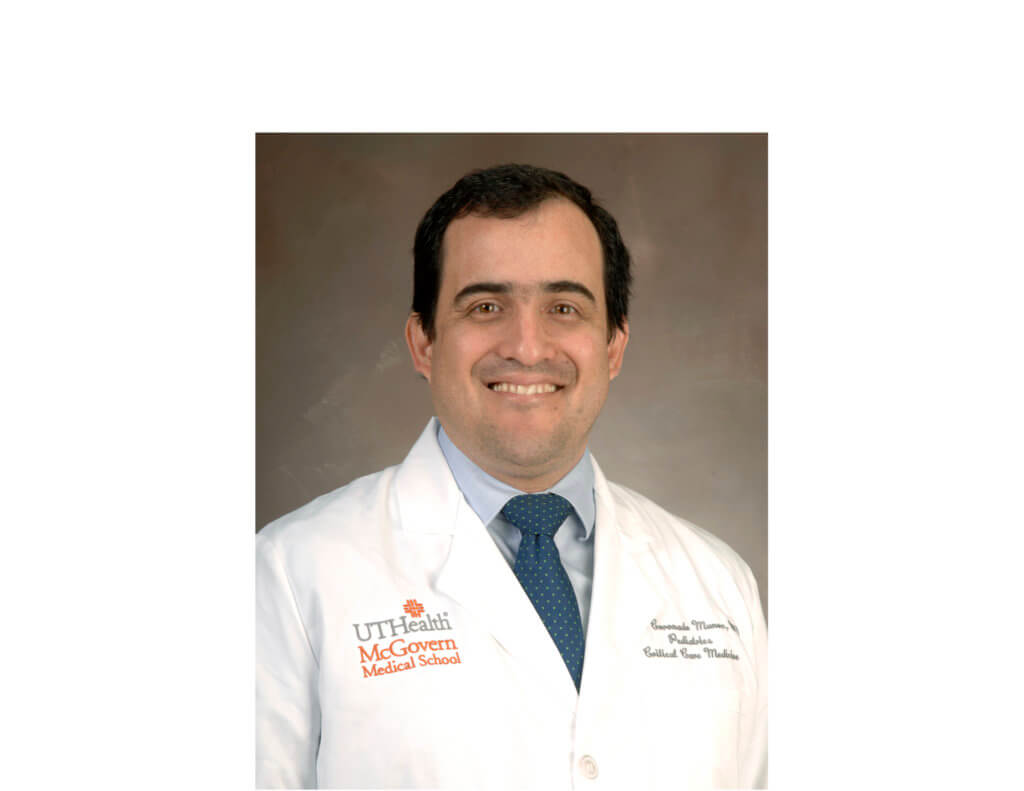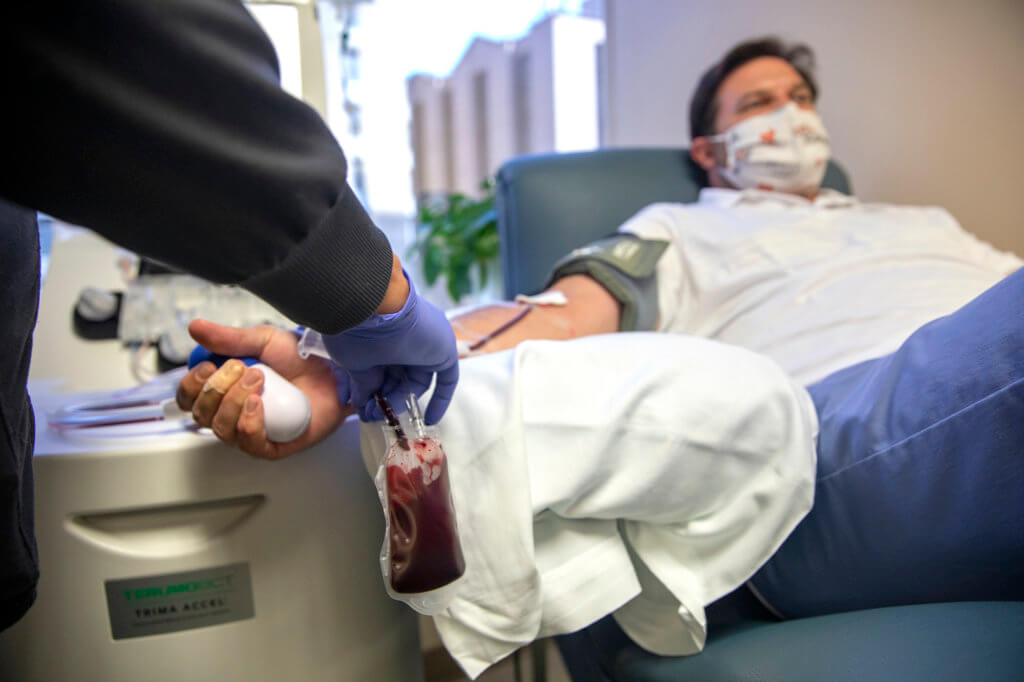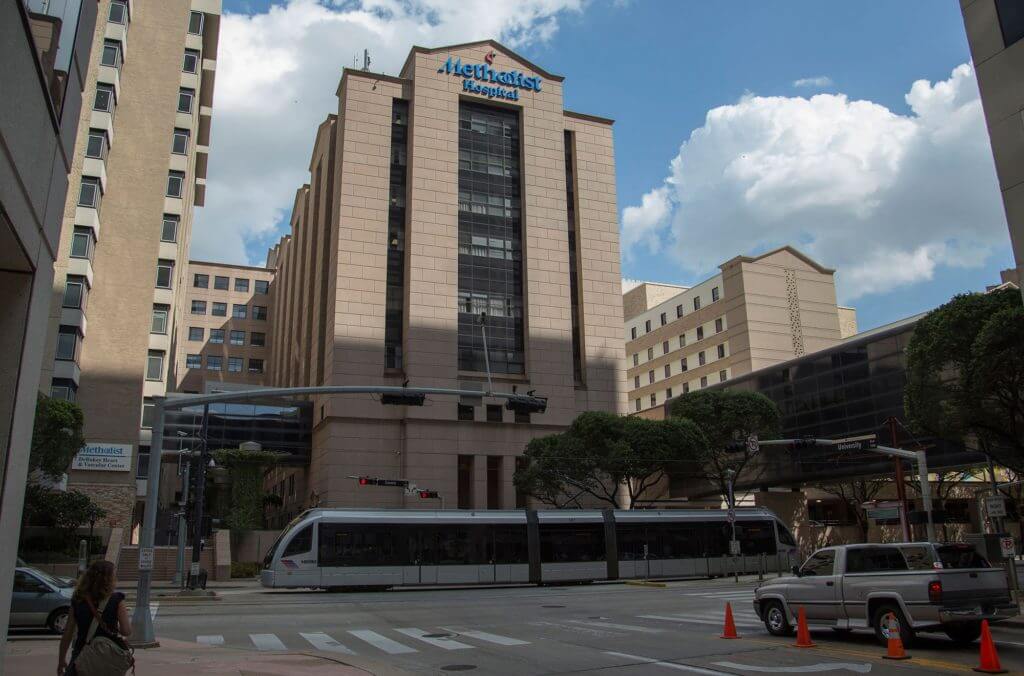A New Home for Surgical Education

Stepping inside the pristine education and research space at the Houston Methodist Institute for Technology, Innovation & Education (MITIE) is akin to walking on the set of a science fiction film. Beneath the glow of operating lamps, practicing surgeons at 15 skills stations—essentially, mini operating rooms—navigate endoscopic tubes through liver models, reflecting the organs’ hollows and rivets on screen. Across the hall, full-body patient mannequins in distress struggle to breathe as they simulate emergency situations. Further down, trainees plug into daVinci surgical systems, mane vering joysticks while robotically controlled arms spring to life several feet away. For practicing health care professionals looking to stay abreast of new technologies and techniques, the future is now.
“MITIE is really a unique institution,” said Brian Dunkin, M.D., the John F. Jr. and Carolyn Bookout Chair in Surgical Innovation and Technology at MITIE, where he also serves as medical director. “Educationally, its focus is one of a kind: it’s a purpose-built facility for practicing health care professionals that enables them to stay on the top of their game. Combining that vision with an institution like Houston Methodist—one on a mission to build the country’s next greatest academic medical center—was the perfect marriage to create a place that couldn’t exist anywhere else. To this day, I still don’t think there’s anything else like it.”
For procedurally-based clinicians (surgeons, nurses and physician assistants), MITIE is positioned as an “educational home,” a place where practitioners can learn innovative techniques and use new technologies.
While medical training in the U.S. immerses future clinicians in a rich learning environment, once they’re practicing, these same physicians are left to their own devices. Forced to reckon with an ad hoc system of conferences—which frequently don’t offer any hands-on training—surgeons are at increasing risk of lagging behind the unprecedented, rapidly escalating pace of advancements in surgical technology.
“There’s a massive cohort of our surgical public that we haven’t built an appropriate educational infrastructure for,” said Barbara L. Bass, M.D., executive director of MITIE, where she is also the John F. Jr. and Carolyn Bookout Presidential Distinguished Chair. “We have wonderful medical schools that really help instill knowledge in aspiring physicians. Then we have fabulous residency training programs, where our residents live for five to nine years in a tightly supervised, highly structured educational environment.
“After that, we act like you’re done and send you out into practice,” she said. “That’s fine, and maybe that worked for the first 40 years of modern medicine, but now with recent medical advances there’s been a transformative introduction of emerging technologies, from laparoscopic surgery to computer-assisted procedures that use robotics. All of a sudden, there are surgeons out there in busy practices who are supposed to safely incorporate new technologies where they don’t even have any fundamental training.”
According to Bass, within a decade of completing training, a surgeon who has not actively worked to remain current will no longer be practicing the standard of care. That realization, compounded by the increasing complexity of operative environments and the introduction of image guidance and robotics, spurred Bass to action. In 2006, after arriving at Houston Methodist Hospital to develop a nationally recognized department of surgery, she proposed the creation of an institute that would serve as a hub for surgeons around the world to improve their skills and learn about new technologies. Housed squarely in the heart of the Texas Medical Center, Bass believed the institute would be ideally poised to leverage the incredible depth of expertise and cutting-edge research that exists in Houston.
Over a decade later, those ambitions have been realized tenfold. Since MITIE was launched in 2007, the institute has progressed from a single room for robotic surgery training to a world-renowned facility that has trained over 35,000 health care professionals across 27 specialties.
“While physicians are our primary focus, we train health care professionals across the board, from paramedics to nurses to anesthesiologists,” said Angela Mitchell, operations manager at MITIE. “The physicians we train practice here until they get the procedure down perfectly. That aligns with our vision at Houston Methodist—in order to be ‘leading medicine,’ these health care professionals have to practice until they’ve really got it.”
While parts of the functional spaces of MITIE are similar to other training institutes, the center’s unique nature stems from its ability to gather different elements—a procedural training laboratory, virtual hospital environment and research core—together under one roof. For trainees, the educational process begins with didactic lectures delivered by experts in the field, followed by a live procedure demonstration—projected from the operating room itself into an immersive viewing environment known as the “medical presence suite.”
Afterwards, the trainees move into the procedural skills lab: a massive room that contains 15 small-scale operating stations, each featuring tools—from high-tech endoscopic cameras to simple surgical needle drivers—to conduct surgeries across multiple specialties. Using both anatomical and inanimate models, the procedural skills lab allows surgeons to practice a specialized operation, master a new surgical technique, or learn how to properly use new equipment—all without risking injury to potential patients. At the other end of the hall, multi- specialty team training is conducted in the virtual hospital, which uses simulation technology to recreate a patient care environment, from the controlled chaos of an operating room to the intensity of the ICU.
“Another important element is the debriefing process,” Mitchell said. “For physicians, being able to see exactly where they need to improve is huge because a lot of the other training they receive doesn’t include that dimension. Everything is recorded as the scenario plays out, and then the participants are placed in a conference room for either individual or group feedback.”
While physician education serves as the backbone that supports MITIE, the institute’s robust research core aims to further the advancement of less invasive and more accurate surgical procedures. Through the development of new metrics for measuring technical expertise—including a special camera that focuses on a surgeon’s face during a procedure, quantitatively measuring his or her level of stress—and even technology that allows practicing surgeons to communicate wirelessly with specialty experts, MITIE’s researchers are setting new standards in surgery.
“The other area of unique expertise at MITIE is our computational surgery program,” Dunkin said. “It’s actually a specialty that we developed here. This is about bringing computer scientists, engineers, mathematicians and clinicians—mainly surgeons—together to work on issues in the operating room to make it function more effectively. We’ve got a whole variety of projects in that domain, from ones that monitor activity in the OR to unique ways to create tools for surgical use. It’s really about bringing computational power into the operative environment and using it to improve performance.”
For Bass, who has over 30 years of experience as a surgeon, MITIE is a resuscitative platform for physicians in practice—one that breathes life into the daily grind of a technically demanding profession and staves off the potential for burnout.
“That broader, restorative purpose is crucial for restoring someone’s faith in their profession,” she said. “I think the surgeons who come here feel empowered to potentially adopt something that’s going to move them forward in regards to their skill set. There’s great joy in that, and there’s a little buzz in acquiring the skills necessary to do something better. Luckily, surgeons are very visually and tactilely oriented, so if you put something in their hands— from a new stapler to a new energy device—they get it pretty quickly. It’s amazing how rapidly that transformation occurs.”
Stefan W. Kreuzer, M.D., assistant professor in the department of orthopedic surgery at The University of Texas Health Science Center at Houston (UTHealth), who has partnered with MITIE on several occasions to teach a course in anterior hip replacement—a minimally invasive form of surgery—is one such individual.
“Since surgeons are very procedurally oriented, you can only show so much on a PowerPoint presentation,” Kreuzer said. “I think what makes MITIE so unique is that their stations are very much like real-world situations. They have all of the equipment there: the monitoring equipment, the lights, the operating room tables. It really allows us to train our surgeons exactly the way they should be performing procedures in the operating room.”
“There will always be a need for a quaternary level of care system that can do things that are groundbreaking, innovative and important for development and research,” added Robert K. Zurawin, M.D., associate professor of obstetrics and gynecology at Baylor College of Medicine, who has also lent his expertise to MITIE. “That’s another value that MITIE provides. Because it’s in the heart of the Texas Medical Center, with all of the available resources of its great hospitals and clinicians, MITIE integrates clinical care and research with the most advanced tools for medical education. That allows MITIE to stretch the boundaries of medicine on all fronts—and that’s as important as just being able to deliver world-class patient care.”
In an effort to push those boundaries of research and development, the American College of Surgeons recently gathered medical experts across multiple specialties at MITIE to establish a national model for retooling, credentialing and privileging for surgeons in practice. Bass and Dunkin envision MITIE as a key player in the future of reassessment for practicing physicians—all while remaining a safe, supportive home for the teaching, training and dissemination of new technologies.
“The future of MITIE is to continue to be the place where surgeons are going to come to learn a new procedure,” Dunkin said. “Not because it’s a great-looking facility in a great town in a great medical center, but because it’s going to enable them to become successful at adopting a new procedure into the practice.”









